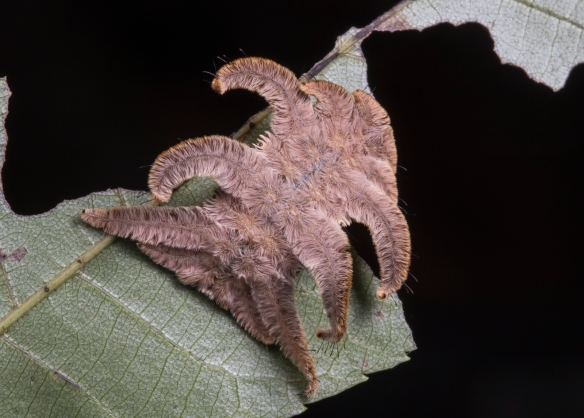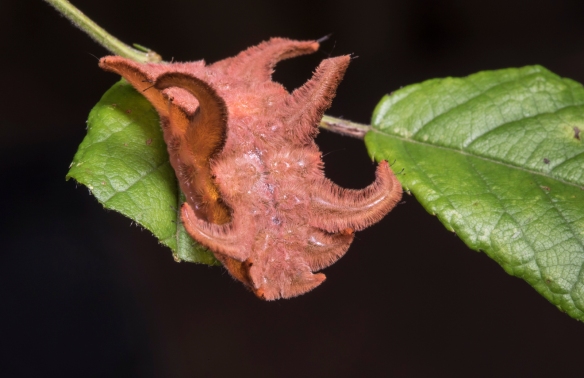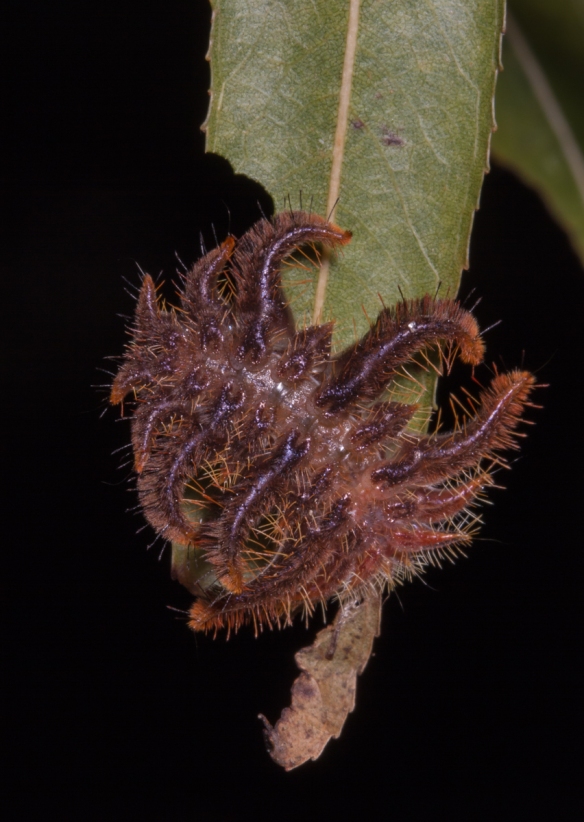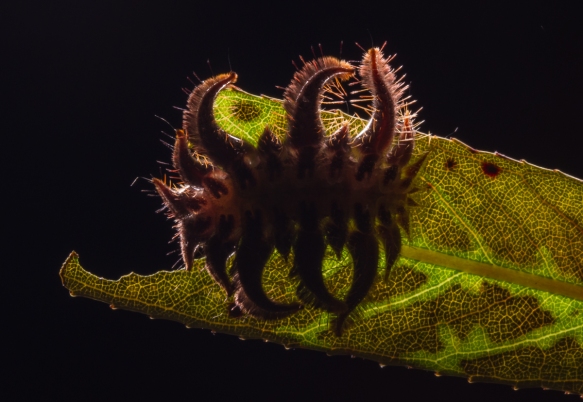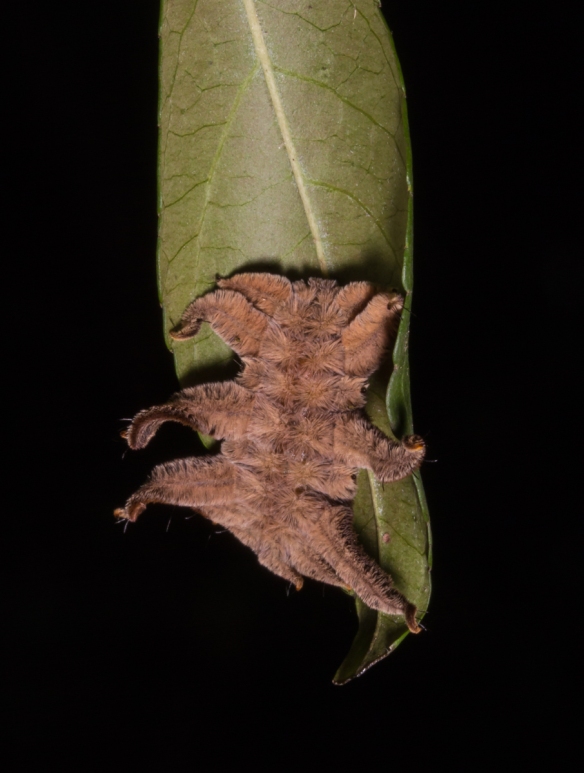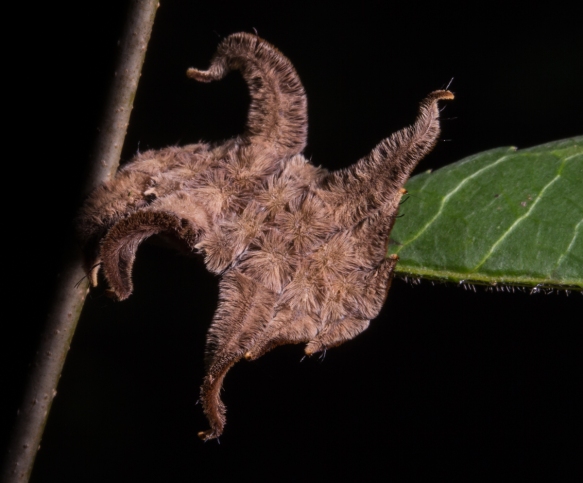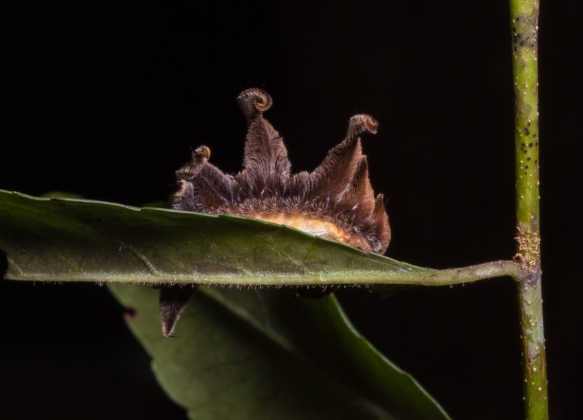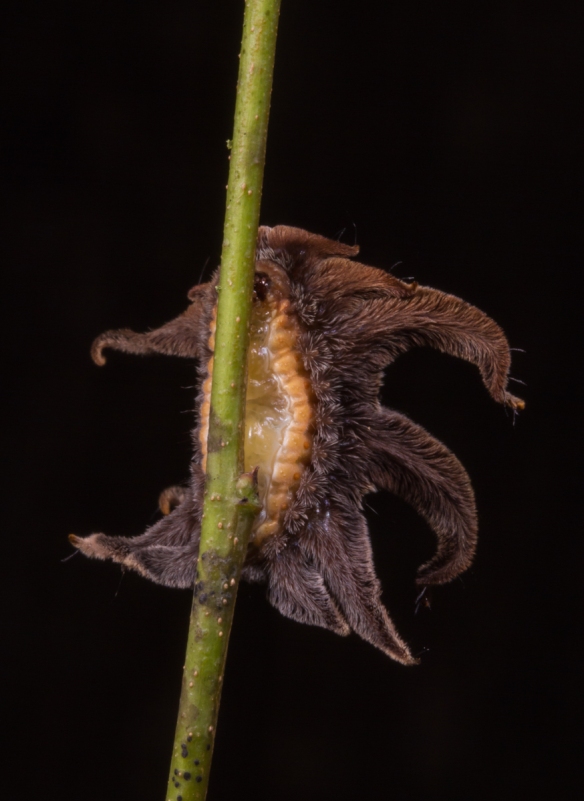…the repulsive larva, tissue by tissue, is transformed into the superlative beauty of the adult moth. Beauty will come from beauty in disguise.
~Edwin Way Teale, on caterpillar transformation
This was a good year for some unusual caterpillars. For some reason, while looking for larvae a couple of weeks ago, we managed to find several of one of the strangest larval forms to be found in these parts, the Monkey Slug caterpillar, Phobetron pithecium. As if Monkey Slug wasn’t weird enough, this well-disguised creature also goes by the moniker of Hag Moth larva. You can read more about these cryptic critters in a previous post from last year’s BugFest outing.
These guys can be difficult to spot as they tend to look like a piece of dried leaf edge. They are generalist feeders which means you can’t search just a few types of plants for them. It’s more a matter of developing a search image and just plain luck. This year we found them on an elm, a multi-flora rose, and a hickory.
Before returning the larvae to their former haunts, I kept them for a couple of days to observe their behavior. Turns out they fit the family name, Slug Moth caterpillars (Limacodidae), and are quite sluggish in their feeding and movement. Here is a short clip of one feeding when viewed from below.
It reminds me of an odd-shaped, fuzzy mitten trying to gnaw the edge of a leaf. The larva tends to keep its head tucked much of the time.
These are listed as one of the “stinging” caterpillars with various references saying they have urticating spines hidden in the “hairs” of the lateral processes (wavy arms), and perhaps elsewhere on their body. I wonder if those whitish tufts visible along the sides, when viewed from below, are also clusters of stinging spines?
This individual was fairly active on its host twig and I managed to twist the twig around to watch its locomotion skills. Another short video clip clearly shows why this group has the word slug in its family name.
While somewhat slow, and definitely bizarre, these caterpillars are one of my favorites. Now, I just need to find an adult moth at my moth light next year.

